#dr. syn alias the scarecrow
Text

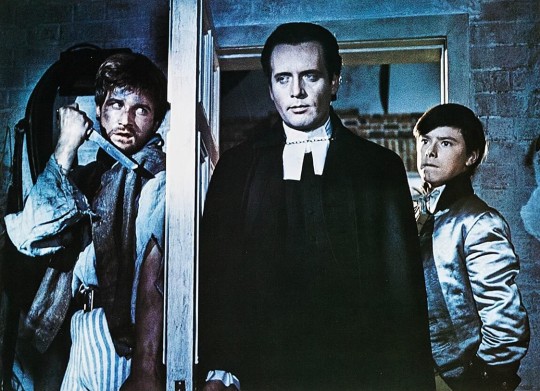

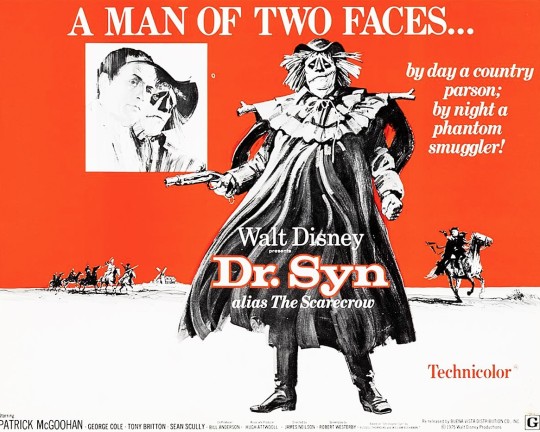
Dr. Syn, Alias the Scarecrow (1963)
#dr. syn alias the scarecrow#the scarecrow of romney marsh#patrick mcgoohan#walt disney's wonderful world of color#walt disney movies#vintage lobby cards#60s adventure movies#60s tv#james neilson#sixties#1963
238 notes
·
View notes
Text
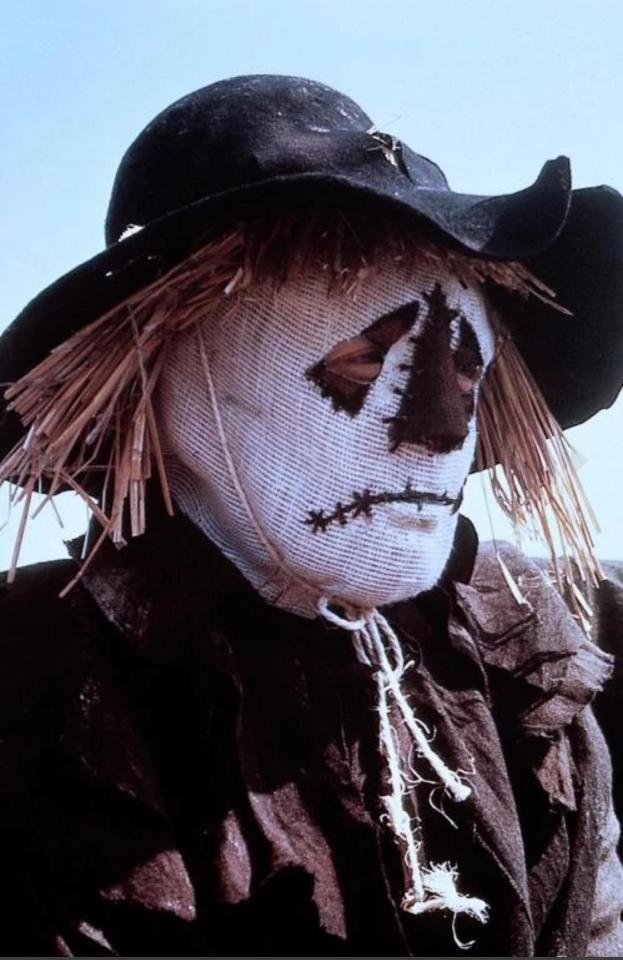
The Night The Scarecrow Walked
#the scarecrow of romney marsh#dr syn alias the scarecrow#patrick mcgoohan#walt disney's wonderful world of color#1963
103 notes
·
View notes
Text

Dr syn to any explosive/firearm is like a moth to a light I stg
21 notes
·
View notes
Text

Today I learned (realized) that the first episode of The Scarecrow of Romney Marsh ran on Disney's Wonderful World of Color on February 9th, 1964...the same night The Beatles headlined The Ed Sullivan Show on CBS.
0 notes
Text
Had a wonderful day at church. Much cooler temperatures this Sunday (It never even made it to the 90s). Skipping the evening service though, battling a kidney infection atm (I get them quite a bit, at least twice a year) and lower back is sore. So going to relax and watch an old Disney movie "Dr. Syn, Alias the Scarecrow". Love and God bless.
13 notes
·
View notes
Text
~Toon them up good!
27 notes
·
View notes
Text
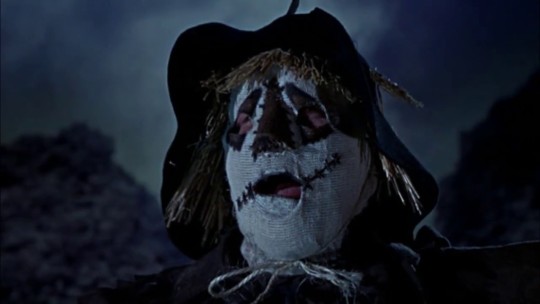
Dr. Syn, Alias the Scarecrow (1963)
by James Neilson
8 notes
·
View notes
Text
Is watching Disney’s Scarecrow for the first time.
7 notes
·
View notes
Photo

The Scarecrow Of Romney Marsh, 1964
Even though it looks odd, The Scarecrow Of Romney Marsh is actually one of the better films made for the Disney anthology TV show. Patrick McGoohan plays Dr. Syn, an English vicar by day and a masked hero for the American colonies by night. It was later released theatrically overseas, and eventually in the U.S. as Dr. Syn, Alias The Scarecrow.
26 notes
·
View notes
Photo

Treasure Island / Dr. Syn, Alias The Scarecrow
1976 re-release newspaper ad
10 notes
·
View notes
Text


The Disney film, Dr. Syn alias The Scarecrow is an adventure classic, but you haven't lived until you've also experienced Russell Thorndike's series of seven books on which the film was based. The books have been reissued in new softcover editions, and I find them to be as enjoyable now as reading Treasure Island was when I was a boy.
2 notes
·
View notes
Text



The Scarecrow of Romney Marsh - art by Sam Savitt and George Wilson (1964)
#sam savitt#george wilson#the scarecrow of romney marsh#walt disney#gold key comics#dr. syn alias the scarecrow#comic art#sixties#1964
299 notes
·
View notes
Text

The Dark Night of The Scarecrows
#the scarecrow of romney marsh#dr syn alias the scarecrow#walt disney's wonderful world of color#disney#cap gun#60s magazine
12 notes
·
View notes
Text








Disney’s THE SCARECROW OF ROMNEY MARSH (1963). (Also known as Dr. Syn, Alias the Scarecrow.)
#disney#scarecrow#dr. syn#movies#films#scarecrows#1960s#60s#1963#walt disney#tv#wonderful world#vintage#images
1K notes
·
View notes
Photo





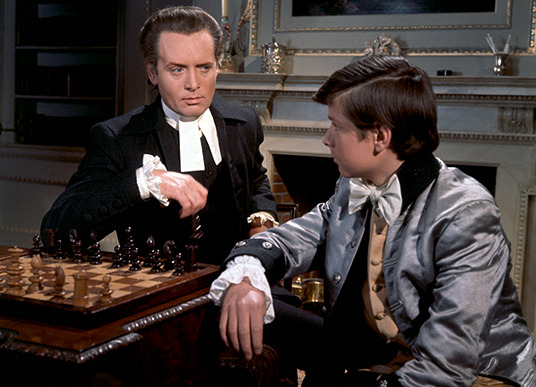
Patrick McGoohan donned a mask and instilled fear in the hearts of the wicked as The Scarecrow of Romney Marsh - a three-episode series produced for Walt Disney’s Wonderful World of Color in 1963. Coming in between runs of Danger Man, the series starred McGoohan as the Reverend Dr. Christopher Syn, a respected vicar who rides by night as the mysterious “Scarecrow” to smuggle goods into England and help his parishioners avoid the oppressive taxes of the King. Eventually, he works to fight the naval press gangs taking men from their homes and he helped a colonial sympathizer escape custody to return to America.
The well-received series was condensed into Disney’s 1963 film Dr. Syn, Alias the Scarecrow. It’s well worth tracking down for fans of McGoohan or of costumed adventurers in the vein of Zorro and the Scarlet Pimpernel. The DVD released in 2008 is long out of print (and way too expensive), but last year the Disney Movie Club released the three episode series on Blu-ray!
23 notes
·
View notes
Text
"MARY POPPINS" (1964) Review

"MARY POPPINS" (1964) Review
Looking at the 1964 movie about a magical nanny, one would be amazed that it took nearly 20 years to make it. I suspect that many did not predict it would become critically acclaimed. But if one is ever interested in the behind-the-scenes production of the film, one would have to read about it . . . or watch the 2013 movie, "SAVING MR. BANKS". I am here to discuss the actual movie, "MARY POPPINS".
Based upon a selection of short stories written by P.L. Travers, "MARY POPPINS" tells the story of how two Edwardian Age children named Jane and Michael Banks, who request a particular kind of nanny after their latest one quits her job after enduring one too many pranks from the two siblings. Their father, a banker named George Banks, is too busy with his career and projecting the image of an ideal Englishman in order to pay attention to them. Their mother, although slightly more concerned about their welfare, is either caught up in the Suffregette Movement or too busy adhering to their father's demands. After the departure of their latest nanny, Katie Nanna, Jane and Michael write a letter describing what they want in a new nanny. But Mr. Banks has different ideas - a nanny who is an effective disciplinarian - and tears up their letter.
However, the children's letter magically reaches a woman named Mary Poppins. She appears at the Banks' home the following morning to apply (or appoint herself) as Jane and Michael's new nanny. Despite his initial reservation, Mr. Banks is impressed by Mary Poppins' firm manner and hires her. With the help of friend named Bert, Mary Poppins introduces the Banks children to a new magical world. In doing so, she also manages to shake up Mr. Banks, his household and his livelihood.
I first saw "MARY POPPINS" as a child and immediately fell in love with it. For years, I have regarded the movie as one of the highlights of my childhood and one of the best films to be released from the Disney Studios. But recent criticism of Mary Poppins as a sugar-coated character of no substance, and of the film as an infantilization of P.L. Travers' work and vision has led me to wonder if my childhood opinion of "MARY POPPINS" may have been overrated. After all, I had spent years judging the movie from the viewpoint of a child. How would I judge this movie from an adult who has spent the last ten to twenty years viewing movies with a critical eye?
As many have recently pointed out, the Disney Studios made a good number of changes to Travers' stories. They also left out a great deal. To point out "all" of the changes and deletions would require an essay. And I am not interested in writing such an essay. Were there any aspects of "MARY POPPINS" that I disliked? Honestly? No. But there are aspects of the movie's production that I wish could have been handled in a slightly different manner.
For quite some time, I never understood why "MARY POPPINS" was shot at the studio's Burbank lot, instead of at England's Pinewood Studios, where 1963's "DR. SYN, ALIAS THE SCARECROW" and "THE THREE LIVES OF THOMASINA" were filmed. Like the two 1963 films, "MARY POPPINS" mainly featured a cast of British actors. Only four cast members were American born - Dick Van Dyke, Ed Wynn, Jane Darwell and Reta Shaw. I feel that if the movie had been shot in Great Britain, its exterior shots of the Banks and Uncle Albert's neighborhoods and the City of London would have featured a bit more details - add more oomph to the movie's visual British style. As for Tony Walton's costume designs, I must admit that I found them rather charming, if not particularly mind blowing. However . . . I could not help but wonder why Mary Poppins' skirts seemed a tad short for 1909-10 fashions. And I also end up wondering why Winifred Banks' wardrobe seemed so limited. Unless I am mistaken, actress Glynis Johns wore only three costumes in "MARY POPPINS". In fact, I suspect she wore one particular costume twice. And Walton designed her costumes either in yellow, powder blue or a combination of both colors. Although I found Johns' costumes rather charming, they also struck me as a bit limited.
Although the film's production designs struck me as a bit limited, I cannot help but admire the film's cinematography and visual style. Edward Colman earned a much deserved nomination for his colorful and sharp photography for the film. Colman's photography also enhanced Tony Walton's pthe matte paintings created by Peter Ellenshaw. Since "MARY POPPINS" was filmed on the Disney Studios backlot in Burbank, Walt Disney and director Robert Stevenson not only had to depend upon Carroll Clark and William H. Tuntke's art direction, but also the visual effects and special effects teams. But "MARY POPPINS" was set in Edwardian London. And since Disney, Stevenson and the film's crew could not film in Great Britain, the production team had to rely on Ellenshaw's beautiful and colorful matte paintings to add to the film's visual look for its setting, as shown in the following images:


"MARY POPPINS" may not have been free of any flaws, but it still remains one of my favorite movies of all time. I had earlier pointed out that some critics have pointed out the movie's failure to be completely faithful to Travers' stories. Honestly? I do not care. It would have been near impossible for any screenwriter to be completely faithful. Travers did not write a single novel. She wrote a series of short stories and novellas. And since it is impossible for a screenplay to be completely faithful to a novel or stage play, what on earth made these critics believe Bill Walsh and Don DaGradi could have been completely faithful to Travers' stories and still fashion a single narrative for the film? Ridiculous!
Personally, I am amazed that Walsh and DaGradi managed to wring a single narrative out of so many short stories in the first place. That must have not been an easy task. As the 2013 movie, "SAVING MR. BANKS", had pointed out, Mary Poppins' purpose within the Banks' household was to save George Banks and his relationship with his children. And she did this in the most interesting way. Mary Poppins used her role as the children's nanny to indirectly affect the family's patriarch. Instead of utilizing traditional means to care for the children, Mary Poppins exposed Jane and Michael to her world - using magic to clean the nursery, an excursion into a sidewalk chalk drawing of the English countryside, and an afternoon tea party on the ceiling with Mary Poppins' Uncle Albert. The children's revelations of their activities naturally shook up Mr. Banks, along with the magical nanny's subversive and cheerful impact upon the Banks' household.
Unable to accept Mary Poppins' impact upon his family and servants, Mr. Banks threatened to fire her. And this is where Mary Poppins, as the film's trickster, pulled off a pièce de résistance. Before Mr. Banks could fire her, Mary Poppins managed to manipulate him into agreeing to take the children on an outing to his bank. However, the night before this outing, she decides to sing a song to the children about an old beggar woman who sits on the steps of St Paul's Cathedral, selling bags of breadcrumbs to passers-by for twopence a bag,so that they can feed the many pigeons that surround her. Between the song and the children spotting the Bird Woman on their way to their father's bank set in motion the chaos that followed and Mary Poppins' plan to save Mr. Banks' relationship with his family. Brilliant.
If the narrative that Walsh and DaGradi had created from Travers' short stories had struck me as brilliant, the songs written by Robert and Richard Sherman seemed even more so. Aside from the performances, the Sherman Brothers' songs seemed to be the heart and soul of the film. If someone was to ask me which song was my favorite, I honestly could not answer that question. Aside from two of them, I found most of their songs very memorable . . . even to this day. One of their songs - "Chim Chim Cher-ee" - was nominated for the Best Song Oscar and won. However, I must admit to being surprised that the beautiful and rather haunting "Feed the Birds" failed to garner any kind of nomination or award. Perhaps it was not as fully appreciated back in 1964-65 as it is today.
Both "Jolly Holiday" and </i>"Step in Time"</i> were not only entertaining songs, but they also provided the background for some very entertaining dance numbers. The first featured the very agile Dick Van Dyke and a quartet of animated pigeons. I found this dance sequence both funny and a joy to watch. You have to see it to believe it. As for the second song, it was featured in a show stopping dance routine that involved Van Dyke, Julie Andrews . . . and chimney sweeps. Between the song, the dance routines choreographed by the husband-and-wife team of Marc Breaux and Dee Dee Wood, and the London rooftops background, the entire sequence is one of the film's highlights.
Another addition to the magic of "MARY POPPINS" proved to be its cast. The movie featured excellent voice performances in the chalk picture sequence from the likes of J. Pat O'Malley, Marni Nixon, Dallas McKinnon, and Alan Napier. Even Julie Andrews and David Tomlinson also provided voice performances. The supporting and cameo performances featured in this film were marvelous. The movie included excellent performances from Reginald Owen as the cankerous Admiral Boom; Elsa Lancaster as the disgruntled Katie Nanny; Arthur Treacher as the kindly Constable Jones; Arthur Malet as Mr. Dawes Jr., one of the board members of the bank that employed Mr. Banks; Hermione Baddeley and Reta Shaw as Ellen and Mrs. Brill, the Banks' gregarious maid and cook; and a poignant cameo by Jane Darwell, who was convinced by Disney to make a brief appearance as the Bird Lady.
"MARY POPPINS" marked the second teaming of Karen Dotrice and Matthew Garber, who portrayed the magical nanny's charges, Jane and Michael Banks. It seemed pretty simple to me why Disney had used this pair in three movies. Not only were they were first-rate actors who more than kept up with the likes of Julie Andrews, Dick Van Dyke and David Tomlinson; they also had a great screen chemistry. In P.L. Travers' books, Mrs. Banks was an easily intimidated woman who could barely maintain control of her household. In this movie, Mrs. Banks was a woman more occupied by her suffragette activities than her children. And she was portrayed by actress Glynis Johns. The latter gave a marvelous performance as a woman who seemed to hid her inability to protect her children from their father's neglect with a few sympathetic words and her own brand of neglect.
If I had to select the most complex character in this movie, it would have to be Mr. George Banks of 17 Cherry Tree Lane and the Dawes Tomes Mousley Grubbs Fidelity Fiduciary Bank. Thanks to actor David Tomlinson in his first appearance in a Disney film, movie audiences were treated to a superb performance. Tomlinson skillfully transformed George Banks from a highly driven and disciplined man who was obsessed with order to an affectionate family man who had found a new lease on life. It almost seems criminal that the actor never received any kind of acting nomination for his performance.
Unlike Tomlinson, Dick Van Dyke did receive a Golden Globe nomination for Best Actor, thanks to his performance as Bert, Mary Poppins' closest friend and jack-of-all-trades. Whenever Van Dyke's performance in "MARY POPPINS" is mentioned, people seemed to comment on his Cockney accent. Granted, it was not perfect. But I have never considered it to be a travesty. I have noticed that whenever he spoke words with a long vowell, his Cockney accent seemed exaggerated. Otherwise, I had no problems. And if someone like Sean Connery can win an Oscar for portraying an Irish immigrant with a Scots accent, I see no reason why Van Dyke's portrayal of Bert should only be condemned for a questionable Cockney accent. Besides . . . accent aside, Van Dyke gave a superb performance in so many other ways. He captured Bert's charm, wit and a slight talent for manipulation with such perfection. Van Dyke was also given the opportunity to portray another character in the film - namely Mr. Banks' elderly boss, Mr. Dawes Senior of the Dawes Tomes Mousley Grubbs Fidelity Fiduciary Bank. How often does one find an actor in his late 30s effectively portraying a 90-something year-old man? In my personal experience, very rarely. And to put the cherry on the icing, Van Dyke was never criticized for his British accent, while portraying Mr. Dawes . . . for good reason. Although there have been hints of his talent as a song-and-dance man in his first television series, "THE DICK VAN DYKE SHOW", this movie really provided an opportunity to convey how truly talented he could be.
Julie Andrews managed to capture the big prize for her portrayal of the film's leading character, Mary Poppins. She won the Academy Award for Best Actress. Whereas many were distracted from Van Dyke's performance because of his accent, others have lamented on how Andrews' portrayal of the magical nanny seemed a far cry from her literary version. Granted, the latter was a plain-looking woman, somewhat more pompous and strict. Although Andrews' Mary Poppins was more beautiful looking and somewhat warmer, she could still be quite sharp-tongued - especially when disciplining Jane and Michael. Andrews also did a great job in conveying Mary Poppins' no nonsense behavior and massive talent for emotional manipulation. That one scene in which the magical nanny manipulated Mr. Banks into taking his children on an outing to his bank was just a joy to watch. Thanks to her skillful and award winning performance, Andrews managed to convey the reason why Mary Poppins is regarded as a trickster.
What else can I say about "MARY POPPINS"? Over fifty years have passed since the movie's initial release and it is still - at least to me - a magical movie to watch. Yes, it had a few flaws. What movie did not? But thanks to P.L. Travers' stories, Robert Stevenson's marvelous direction, Robert and Richard Sherman's music, the movie's visual effects teams and the superb cast led by Julie Andrews and Dick Van Dyke; "MARY POPPINS" remained timeless and magical as ever.

#mary poppins#mary poppins 1964#walt disney#robert stevenson#sherman brothers#robert sherman#richard sherman#julie andrews#dick van dyke#david tomlinson#glynis johns#karen dotrice#matthew garber#hermione baddley#reta shaw#ed wynn#arthur malet#elsa lanchester#peter ellenshaw#arthur treacher#reginald owen#jane darwell#p.l. travers
1 note
·
View note